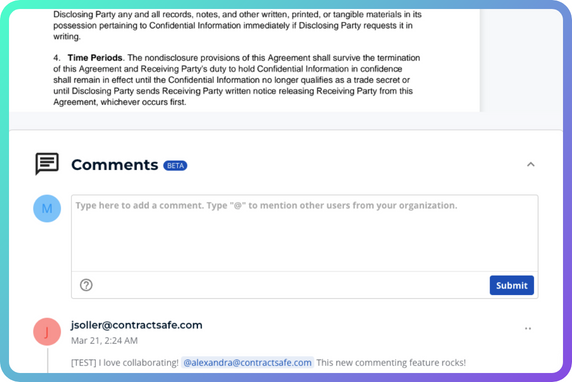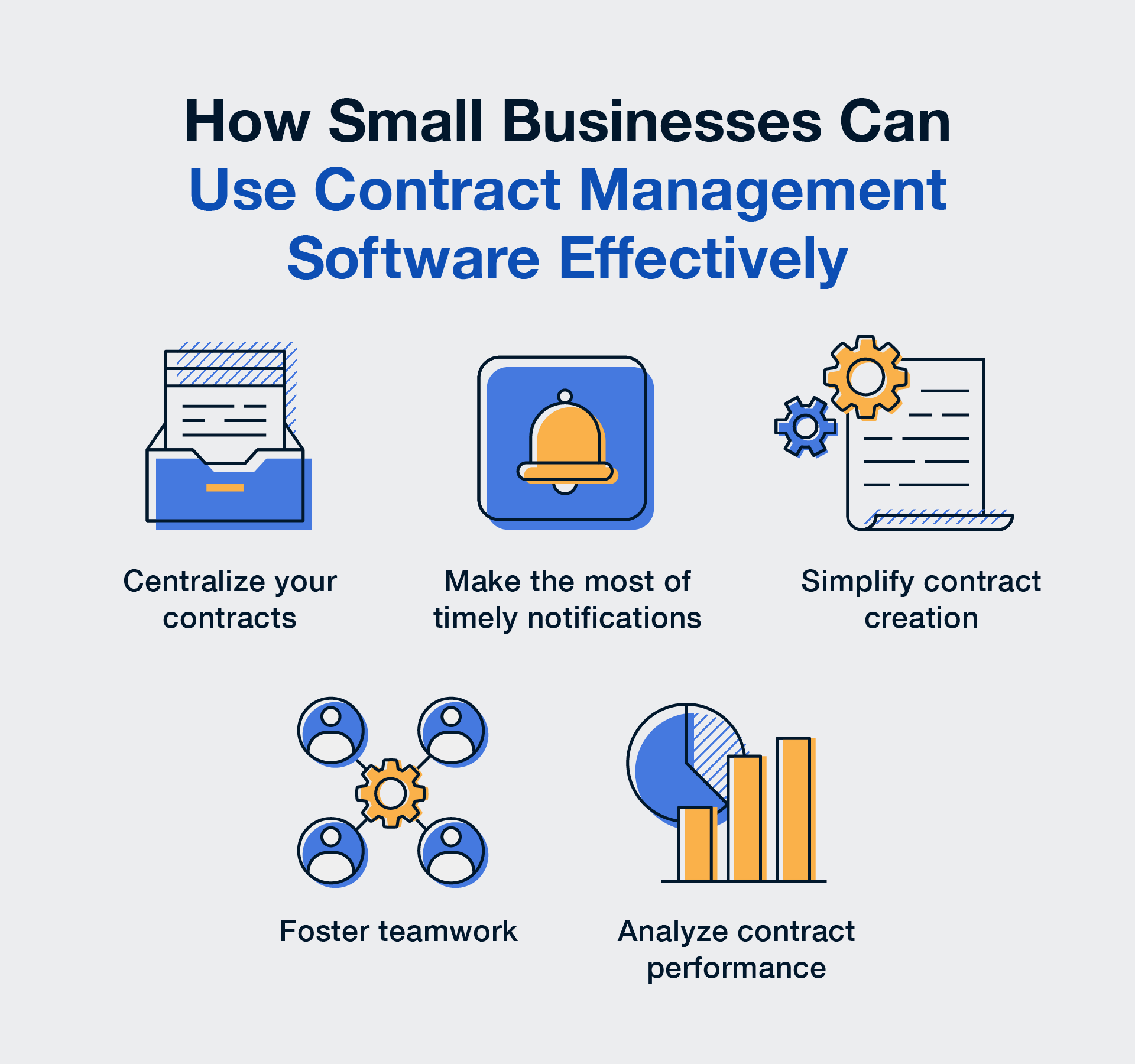In many ways, contracts are the backbone of business operations. customer service, vendor deliverables, employee obligations, and real estate terms are just a handful of the many critical business functions governed by legal agreements. Contracts serve the purpose of protecting companies from legal and financial risk; however, an ineffective management process can often have the opposite result.
The manner in which a company creates, negotiates, executes, and stores legal documents is known as the contract management process. As a business grows, so does the volume of contracts necessary to sustain day-to-day business operations. Inefficiencies in the process of managing contracts can negatively impact a company’s P&L; however, with automated tools and solutions, companies can effectively streamline the contract management process in order to achieve operational savings and mitigate risk.
Stages of the Contract Management Process
The contract management process is a complicated workflow that often involves multiple teams and dozens of employees. The larger a company is, the more complex the contract management process can become. By breaking it down into individual stages, businesses can get a better sense of opportunities to improve the efficiency of the flow of documents across an organization. Below are the individual stages that make up an effective contract management process:
Request
The contract management process starts when a business has a need to enter into a legal agreement with a third party (e.g. customer, vendor, employee, government service, or property owner). The two parties will often negotiate whose paper will be used to draft an initial version of the contract.
Creation
Business teams must effectively communicate the desired terms of the contract to an attorney or contract manager, who will then incorporate the terms into the initial draft. Most attorneys will start with a template or boilerplate, and then further customize it with specific terms that apply to the engagement.
Negotiation
After the first draft is created, it is sent to the other party’s contract or legal team for review. At this point, there is almost always some level of negotiation that takes place - both sides will take turns redlining the agreement until it meets their expectations. If the two legal teams fail to agree to terms after a few rounds of redlines, they will often meet to discuss any unresolved matters.
Approval
Because contracts are often associated with critical business operations or large amounts of money, businesses often require that finalized contracts move through an internal approval chain before they are officially signed. The approval chain is usually made up of managers, directors, or officers, and the length of the chain ultimately depends on the size of the business.
Execution
After approval, the final draft is sent to company officers at both companies for signature. Typically e-sign platforms, such as DocuSign, are used to facilitate the signature process electronically and ensure both companies receive an executed copy for their records.
Storage
Once a contract is signed, it must be stored securely and protected from unauthorized access. Many companies use a cloud-based secure contract repository with access controls to keep documents safe, while simultaneously making them accessible to key employees who may need to quickly locate them for reference.
Management
A business owner or manager is often assigned to each agreement in order to verify that the terms, timelines, and deliverables outlined in the contract are being carried out. If for any reason a business fails to live up to its obligations, a business owner may inform the contract or legal team and discuss what actions may be taken to resolve the issue.
Amendmendments and Addendums
Business relationships naturally change, so contracts often need to be adjusted. Businesses may draft contact amendments or addendums in order to alter the terms of an existing agreement. Contract amendments will usually follow the same management process as the initial contract.
Renewal
Contracts either have an auto-renewal date, an expiration date or stay valid until they are cancelled (evergreen). In either case, businesses need to negotiate any changes well before the date stated in the agreement. Automating this process through alerts and reminders can help ensure businesses never miss a key contract date.
Teams Involved in the Contract Management Process
When most people think of the contract management process, they generally associate it with work that pertains directly to the legal team. While legal has the most responsibility when it comes to contract management, an effective process requires cross-department collaboration from multiple teams across an organization.
Sales, business development, the finance organization and procurement teams can all play key roles, as these employees are responsible for negotiating the deals that require legal governance. As a result, they must be able to work closely with legal experts to communicate the terms and expectations of a specific deal. It’s also important that they are aligned with the business’s priorities so that they are not proposing terms or obligations the business can’t fulfill.
Finance teams must oversee the entire contract management process from a budgetary perspective, as they are generally responsible for ensuring companies are able to fulfill the financial obligations associated with contracts. Any planned expenses, revenue, payment terms or billing requirements should be reviewed and approved by finance teams prior to contract execution.
Additionally, managers and business leaders must oversee every stage of the contract management process. They are responsible for understanding and accepting any business impacts or financial risk associated, maintaining a business relationship with the third party, approving the final agreement, and ensuring confidential information is able to be stored securely.
How can Software Streamline the Contract Management Process?
The complexity of the contract management process makes it difficult to manage without some degree of automation. Shared drives, calendars, and spreadsheets may work temporarily for early-stage start-ups, but these practices are not sustainable in the long run. Contract management software enables teams to work collaboratively while providing tools to help automate the stages of the contract management process.
An intuitive, centralized platform can help legal teams streamline the request, creation, and negotiation stages of the management process. Version control tools can prevent edits from being overwritten and can ensure teams are all reviewing the most up to date contract during the negotiation process.
Some contract management platforms can easily integrate with CRMs and e-sign platforms to help facilitate the approval and execution stages of the contract process. Safety and security features, such as document encryption and user permissions can help to automate storage and management. Additionally, many contract platforms are equipped with intuitive alerts and notifications that multiple departments can use to stay ahead of auto renewing software agreements or track software deliverable dates.
The contract management process can be challenging for businesses of all sizes. With so many departments and employees supporting the various stages of the process, an automated solution is necessary for achieving operational efficiency. However, every business’s contract lifecycle is different, and so finding a solution that fits your individual business needs is key to reducing costs.















